Section 2 of the Oregon Coast Trail totals 41 miles; it may be the most grueling at the start, but it mellows out over level beach terrain for the remainder. Mileage consists of an initial 15 miles on dirt trail, 10 miles on sand, and a total of 16 miles on pavement. After leaving Arch Cape at the end of Section 1, the trail climbs to nearly 1,000 feet above the Pacific. It then descends back down to sea level before climbing another 1,600 feet to the highest point on the Oregon coast, Neahkahnie Mountain. It's literally all downhill from here through Manzanita. Then the route includes an optional ferry across Nehalem Bay, a walk down a jetty, more beach walking through Rockaway, and one of the longest highway legs of the OCT if the ferry is not used.
Tips for hiking the Oregon Coast Trail
The Oregon Coast Trail offers hikers an opportunity to experience the beauty of Oregon’s coastal landscapes and ecosystems in an intimate and continuous way, and it passes through fragile environments. Your awareness of a few additional items can enrich your overall experience on the OCT and help minimize your impact on delicate environments along the way.
- Before departing on your hike, learn the Leave No Trace Seven Principles so that you can practice them while you are out on the trail. The more that people incorporate Leave No Trace into their decisions and habits, the better the outdoor experience will be for everyone.
- Learn about Oregon’s five unique marine reserves. Marine reserves are areas that have been set aside for study, research, and conservation; it is illegal to remove any marine life from a marine reserve, and they are also protected from any development. Marine protected areas, which are often adjacent to reserves, allow some fishing and development. Marine reserves are wonderful areas to observe wildlife and take in Oregon’s beautiful coastal scenery. Fortunately, Oregon’s marine reserves couldn’t be more accessible than when hiking the OCT. From north to south they include:
- The islands and sea stacks along the coast are protected as part of Oregon Islands National Wildlife Refuge. They provide crucial nesting habitat for seabirds and pupping/resting sites for seals and sea lions. All seabirds and marine mammals are protected by federal law and are sensitive to human disturbance. For this reason, all islands and sea stacks are closed to public access year round.
- Portions of the trail meet the ocean's waterline and may only be passable at low tide. Excercise caution and safe judgement; wait for appropriate tidal conditions in these areas, and always watch for sneaker waves.
- Pay special attention to areas signed and posted as snowy plover habitat. A handful of Oregon’s beaches and estuaries provides critical habitat for the western snowy plover, a species that the U.S. Fish and Wildlife Service listed as threatened in 1993. The breeding season for the western snowy plover is from March 15 to September 15, and during this time it is imperative to avoid potential nesting locations in dry sand beach areas. Dogs, kites, bikes, and vehicles are all prohibited from March 15 to September 15, and walking is only allowed on hard-packed wet sand. Please do your part to help this threatened species survive by complying with posted restrictions and completely avoiding closed areas. There are designated snowy plover areas from Fort Stevens to Floras Lake, and hikers should be aware of their locations. To learn more, be sure to check out these snowy plover resources:
- The Oregon coast is generally a very dog friendly location, and dogs are allowed on most beaches, state parks (when on a leash) and other coastal public lands. However, there are specific times and locations when dogs are not permitted in certain areas, such as beaches and estuaries identified as snowy plover habitat during nesting season. Please pay attention to posted signage and respect times and areas where dogs are prohibited.
- For those interested in hiking the OCT in sections, or even just accessing the trail for day hikes, take note that recreation fees and passes are required at several federal recreation sites. If you will be parking at one of the state or federal fee area recreation sites, make sure to pick up the applicable recreation pass such as an Oregon Coast Pacific Passport.
Oswald West State Park

After exiting the beach at the south end of Arch Cape, follow East Shingle Mill Lane for 0.3 miles until you see the OCT trail marker sign. To access the trailhead to Oswald West State Park, a follow a private driveway. After crossing the suspended footbridge over Arch Cape Creek, the trail ascends mildly through dense coastal forest via a few switchbacks before following an ancient logging road as it gradually descends to meet Highway 101 after about 1.25 miles. Cross the highway to pick up the trail again directly on the other side. It then meanders over numerous bridged drainages for another half mile before crossing another road. The trail continues along another ancient logging road, and after another 0.4 miles you'll come across an ideal campsite, complete with a fire ring. Seasonal streams are the only fresh water sources nearby. Note the massive trunks of a once logged old-growth forest that is now replaced with second-growth trees. Continue up several switchbacks before reaching the high point of the Oswald West northern bluff. The terrain up here may have been too steep for logging operations, and the old-growth forest of Sitka spruce and western hemlock still thrives. Salal and sword fern are major players of the understory and can be found in abundance on the Oregon coast.
There are several beautiful views from atop this bluff, and there is also another ideal campsite another 2.5 miles from the last site. Again, seasonal streams may provide fresh water. You'll find some of the most scenic views of the entire trail through here, including a unique series of basalt sea caves at the bottom of Cape Falcon and a black beach that is likely the result of black basalt eroding from the cliffs above. But the most persistent theme through Oswald West State Park is thick, dense, dark, green forest. The lush, verdant woods are quite a sight to behold on their own. Impressive life forms thrive off of the deadfall such as nurse logs, when a downed tree gives life to seedlings and even second-growth trees. Also, keep in mind that the trail can be quite muddy in some areas.
As you approach Cape Falcon in another 0.5 miles, the forest gives way to a vast meadow of thick salal. A short side trip to the tip of Cape Falcon yields panoramic views to the north and south. This cape was named by the Spanish explorer Bruno Heceta in 1775. Note that Cape Falcon is part of the Cape Falcon Marine Reserve and Marine Protected Area. This means that there are specific prohibitions against fishing and the harvesting of fish, invertebrates, and seaweed. Check here for specific clarifications on regulations, exemptions, and a detailed representation of the area's boundaries.
The OCT continues past a two-tiered waterfall called Blumenthal Falls. The upper tier is viewable from the trail, while the lower tier pours out of view into the ocean and the beach below. After an additional 1.5 miles past the tip of Cape Falcon you'll arrive at the Short Sand Beach Day-use Area. Surfers frequent the ideal waves here in Smuggler's Cove on one of the most scenic beaches in Oregon. A network of well-signed trails exists in this area, and the OCT is clearly marked (occasionally as the Elk Flats Trail). Climb a few switchbacks south of the beach and enjoy brief views of the Pacific between the trees far below. The forest thickens into smaller red alders before abruptly giving way to another meadow of salal. A fork in the road leads to a recommended viewpoint overlooking Devils Cauldron. Many hikers have fallen from these sheer cliffs, leading to the installation of a rudimentary cable barrier.
Approximately 1.5 miles from Short Sand Beach you'll arrive at the second crossing of Highway 101. Directly on the other side lies the steep and grueling trail up Neahkahnie Mountain. A meadow of salal allows initial panoramic views, but soon you'll be back in the familiar enclosure of thick coastal forest. Weather conditions can rapidly change up here. Be prepared for high winds, heavy rains, and thick mist. The trail dips down and back up through a saddle before traversing a ridge and arriving at the trail's high point of 1,552 feet (which is not the actual summit) after approximately 2 miles. The views to the south from up here are tremendous if the mountain isn't socked in with mist, which can happen frequently and without much warning.
Nehalem Bay State Park to Tillamook River

Descend the east slope of Neahkahnie Mountain to a trailhead at the end of a gravel road. Follow this road to Highway 101 and proceed south, with caution, along the right shoulder of the highway. After 1.25 miles, cross the highway at Nehalem Road, and after another 0.8 miles you'll return to the beach north of Manzanita. It's about 2 miles to exit the beach to Nehalem Bay State Park, where there is a hiker/biker camp available near the park's entrance for $8, as is the case with most coastal state parks. Call Jetty Fishery at 503.368.5746 to arrange a ferry boat ride across the Nehalem Bay ideally 48 hours ahead of time. It costs $10, but the alternative is an unsafe, 9-mile walk along Highway 101 around Nehalem Bay. The most efficient route to the beach where you board the ferry boat is to take the Nehalem Spit Trail. From Nehalem Bay State Park Campground, return to the beach and walk another half mile before again exiting the beach to take the Spit Trail. Otherwise, follow paved paths and roadways from the campground to the south day-use area and find the Spit Trailhead from there. It's 2 miles along this horse road and trail that eventually becomes a narrower trail. This trail is unmarked, but it remains obvious as the road veers southwest. Just continue south (to the left) along this narrower trail.
The vegetation along the Spit Trail consists of stunted spruce, pine and wax-myrtle in addition to sedgey bogs and willow thickets. The beach of Nehalem Spit provides critical habitat for the threatened western snowy plover, and the environment here is ideal for these birds: sparsely vegetated sand beaches and dredge spoils deposited on beach or dune habitat. Please see the Tips section above for information on how to proceed through this sensitive habitat.
After arriving on the small beach directly across from the Jetty Fishery dock, which is distinguished by an obvious yellow boathouse, call 503.368.5746 to summon your ride. It's a mere two-minute boat ride across the inlet to the dock. Pay for your $10 ride in the bait shop. The staff here are quite friendly and hospitable should you choose to rest a while. Otherwise, if it is low tide, proceed carefully along the south jetty as it dips onto a brief, shallow saddle before continuing down to the jetty to the beach. If the tide is high, walk along the highway for a half mile to find some stairs leading to Section Line Street, which will return to the beach. From here it's a mellow 6-mile beach walk with occasional stream crossings. Note the Twin Rocks at the south end of the beach just offshore. Erosion has given way to a 35-foot arch through the closest rock. After passing by these rocks, continue south as the north jetty of Tillamook Bay inlet comes into view. Exit the beach at the base of the jetty and follow the OCT trail marker signs either along the jetty at low tide, or follow the roadway through Barview Jetty County Park, which is an ideal camping spot.
Another option at this junction is to have a pre-arranged ferry boat ride across Tillamook Bay inlet. Garibaldi Marina offers such rides from 7 a.m. to 12 p.m. from March 1 through November 30 for $30 for the first person and $10 for each additional person. Call 503.322.3312 48 hours in advance to arrange a ride. This would cut out about 20 miles of roadway travel, allowing for about 5 miles of beach walking along Bayocean Spit. The walk from Barview Jetty to Garibaldi Marina, however, is along a 2-mile section of the highway that has no shoulder.
If you don't take the ferry, follow the small OCT trail markers beside Highway 101 along Tillamook Bay. Public transportation, which is actually quite substantial throughout Tillamook County, is a great choice for this Tillamook Bay segment. There is even a dial-a-bus service that will pick up riders outside of designated stops. A couple of viewpoints to be aware of along this leg are the iconic Crab Rock and Captain Robert Grey Day Use Area. At the latter viewpoint there is a large plaque detailing the voyages of this captain. He became the first American to circumnavigate the globe, and he also transported the first documented person of African descent to set foot in present-day Oregon. Captain Grey later voyaged to the Columbia River aboard the ship Columbia Rediviva, which is how the river earned its name. Keep your eyes open for brown pelicans, pelagic cormorants, great blue herons, and the common loon, as these birds all frequent the bay. Continue on through Tillamook and leave Highway 101 following the signs for Cape Meares Lighthouse and the Three Capes Scenic Route, heading west on 3rd Street. At the end of this section you'll arrive at the junction of OR-131 (3rd Street) and Bayocean Road Northwest after crossing the Wilson River Bridge.
Risks of hiking road sections
Although officially designated as a trail over 40 years ago, the OCT is an ongoing project and not yet a single continuous hiking trail. Gaps in the trail, usually caused by rivers, bays, or rocky headlands, require hikers to walk along busy roads (often U.S. Highway 101) that are not designed for pedestrian use. Oregon Parks and Recreation Department and other public and nonprofit agencies, including local cities and counties along the Oregon coast, are working to eliminate these breaks by establishing trails to connect trail segments and beaches.
In 2016, the Oregon legislature enacted legislation requiring OPRD to complete an action plan that will identify steps needed to complete the trail. This planning effort will identify key stakeholders and document the current status of trail completion, evaluate and assess alternatives for completing trail segments, and seek funding to complete new trail sections.
Until the trail is completed, OCT hikers will have to decide whether they choose to walk along the shoulder of the highway that is, in fact, currently an official part of the trail. It is important for OCT hikers to understand the risks of walking along the highway portions of the OCT. The most prevalent dangers are being hit by a vehicle or being struck by debris kicked up by or flying out of a passing vehicle. In addition, some highway sections along the Oregon Coast Trail are longer and more difficult than others. These highway sections are detailed in each section's guide.
Public safety is of the highest concern at Outdoor Project, and we do not condone walking along roads without a designated pedestrian path. We support utilizing other modes of transportation to connect the trail and beach sections such as public transportation, private shuttle or taxi, biking, ferry, or completing the Oregon Coast Trail in hiking sections to avoid the highway altogether. Two great resources for finding alternative transportation are Google Transit (Google.com/transit), Visit The Oregon Coast (visittheoregoncoast.com/transportation/), and an internet search for taxis or other transportation alternatives in the town nearest to the trail break. There are also ferry services available to cross the Nehalem River, Tillamook Bay and the Umpqua River, and these will greatly reduce the amount of highway miles one must walk. Note that ferry boats do run on a regular schedule and must be reserved in advance. More information on each of these ferries is found in Section 2 and Section 6.
This guide provides information needed for hikers who do choose to walk the trail in its entirety, including those portions along the highway. We urge those hikers to exercise caution to ensure a safe and enjoyable hike on the OCT.
For further information on the Oregon Coast Trail, be sure to check out these articles:
- Oregon Coast Trail Overview
- Oregon Coast Trail Section 1: Fort Stevens State Park to Oswald West State Park
- Oregon Coast Trail Section 3: Tillamook River Bridge to Bob Straub State Park
- Oregon Coast Trail Section 4: Pacific City to Otter Rock
- Oregon Coast Trail Section 5: Otter Rock to Heceta Head
- Oregon Coast Trail Section 6: Heceta Head to North Bend
- Oregon Coast Trail Section 7: North Bend to Bandon
- Oregon Coast Trail Section 8: Bandon to Humbug Mountain State Park
- Oregon Coast Trail Section 9: Humbug Mountain State Park to Pistol River
- Oregon Coast Trail Section 10: Pistol River to California
Logistics + Planning
Current Weather: Powered by Dark Sky







Preferable season(s)
Congestion
Parking Pass
Open Year-round
Pros
Cons
Trailhead Elevation
Highest point
Features
Typically multi-day
Suitable for
Permit required
Nearby Adventures
Nearby Lodging + Camping
A profound concept originally envisioned by governor Oswald West, in 1967 the Oregon legislature ultimately realized his vision of making the entire Oregon Coast forever open to the public in a piece of landmark legislation titled the Oregon Beach Bill, officially making all 363 miles public land. "The People's Coast" is truly a one-of-a-kind coastline, a unique blend of mountains and rocky stacks, towering old growth forests, marine sanctuaries, tide pools and kelp forests, charming towns, historic fishing communities, world-class golfing, breweries, and simply jaw-dropping scenic beaches. We encourage you to plan your next trip at visittheoregoncoast.com or by calling (541) 574-2679.

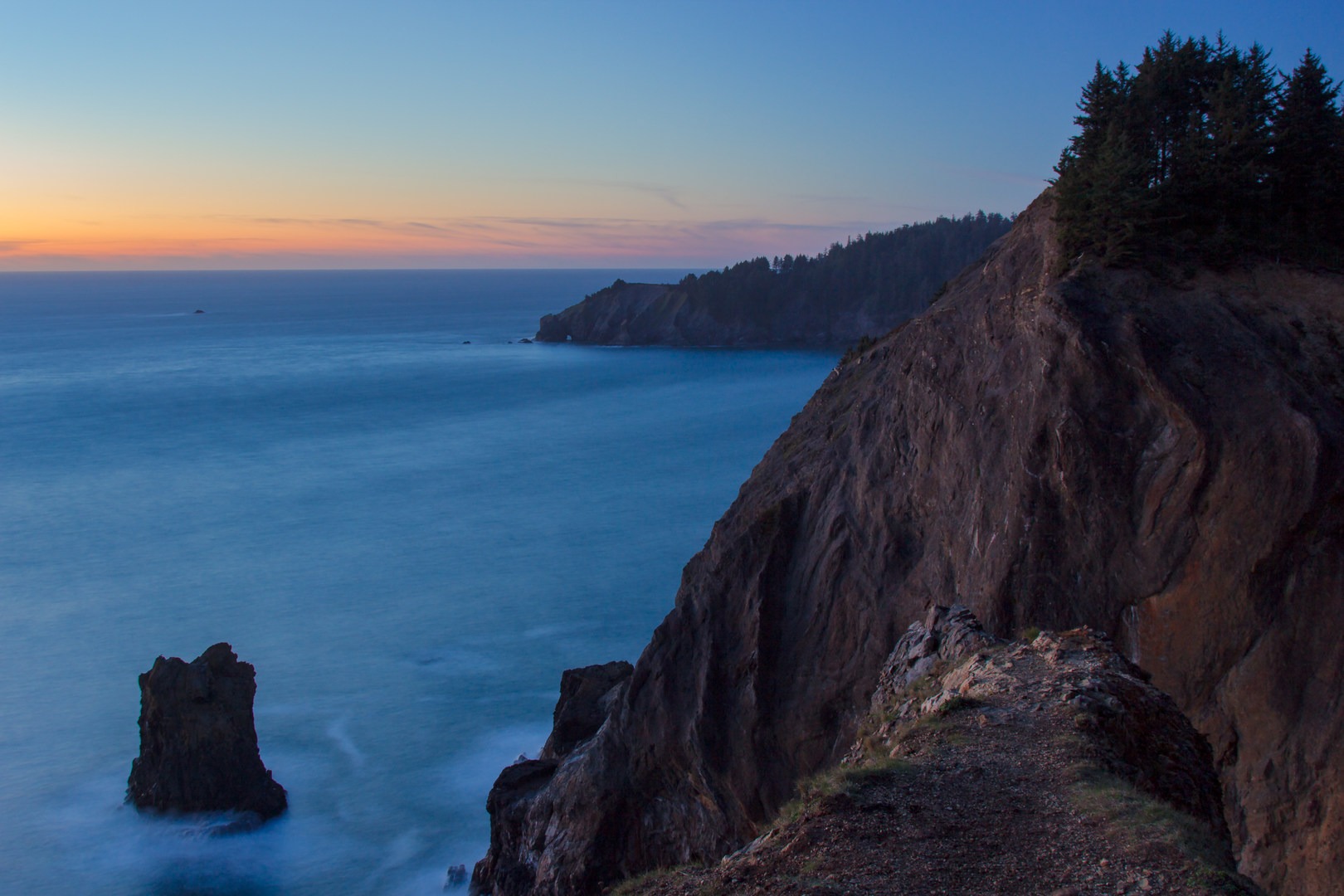



















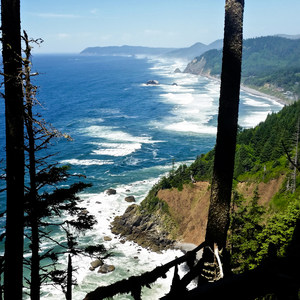
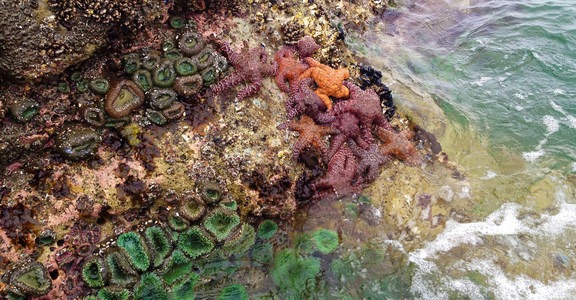
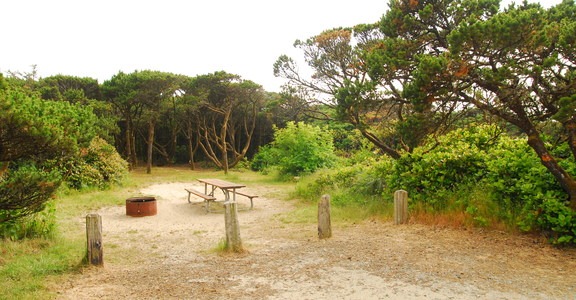
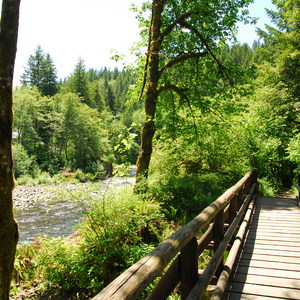
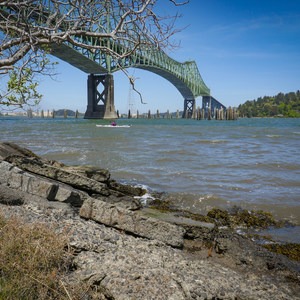

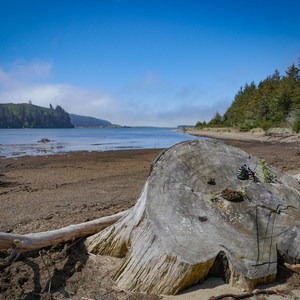
Comments
Sign In and share them.